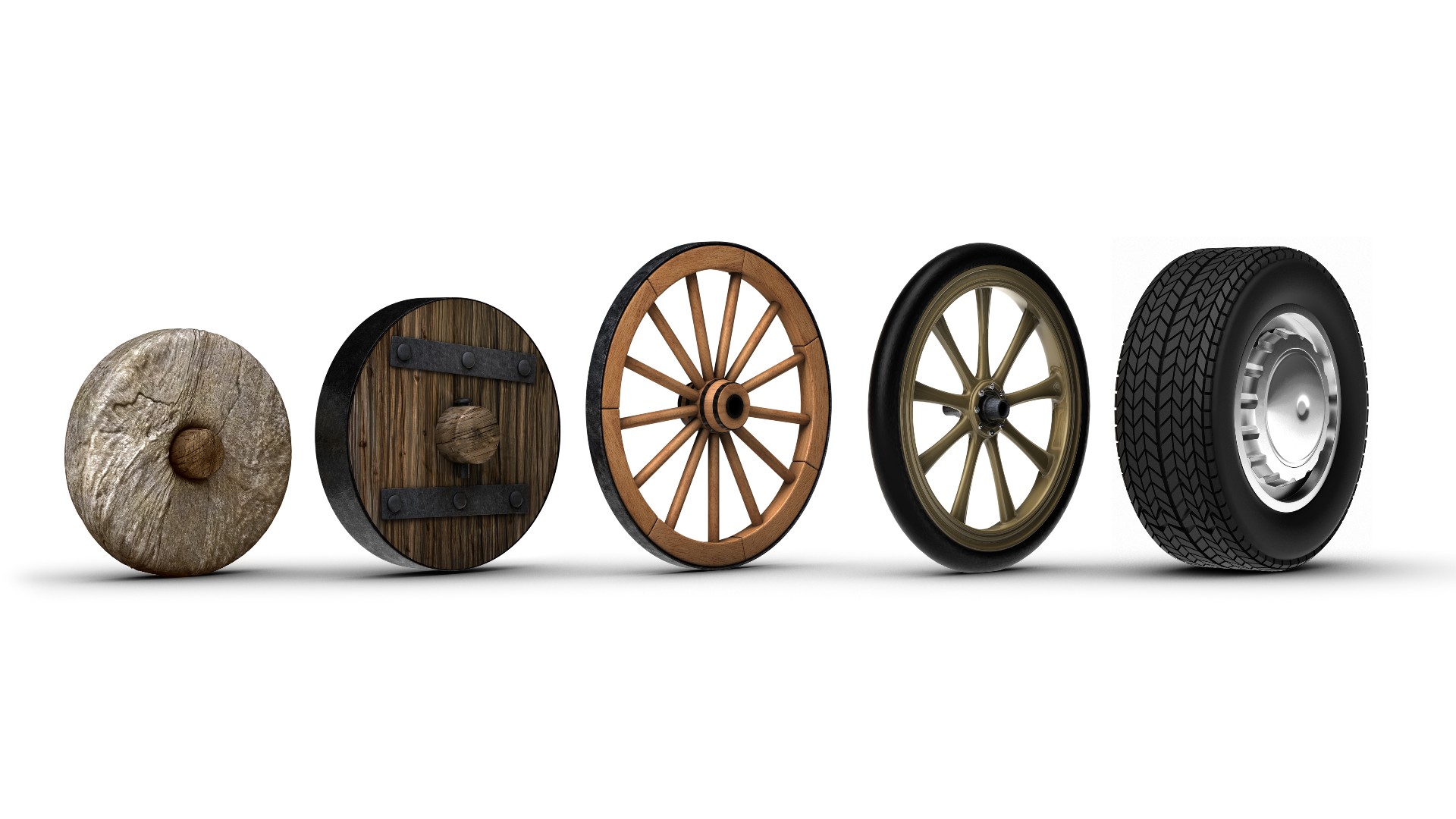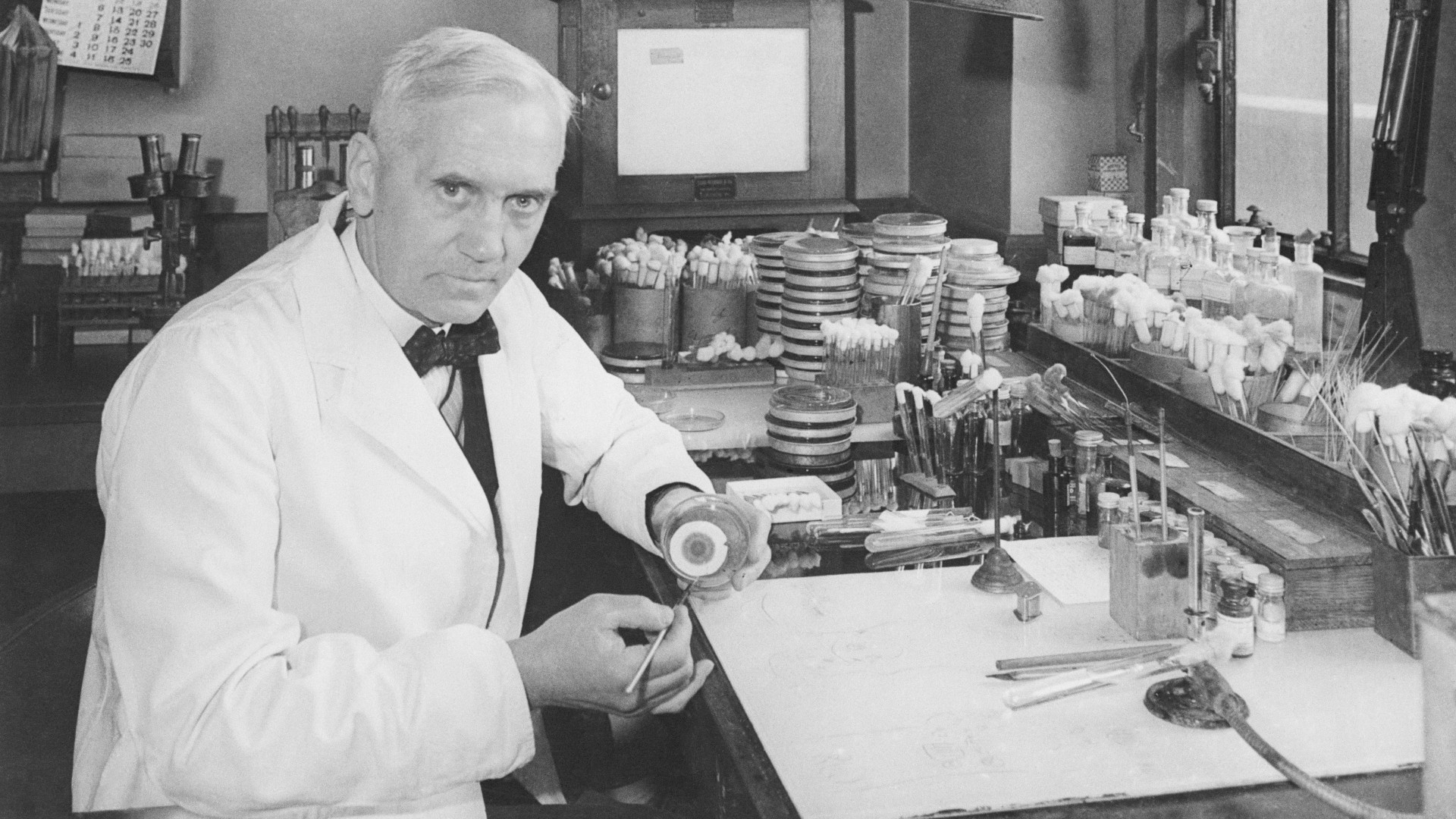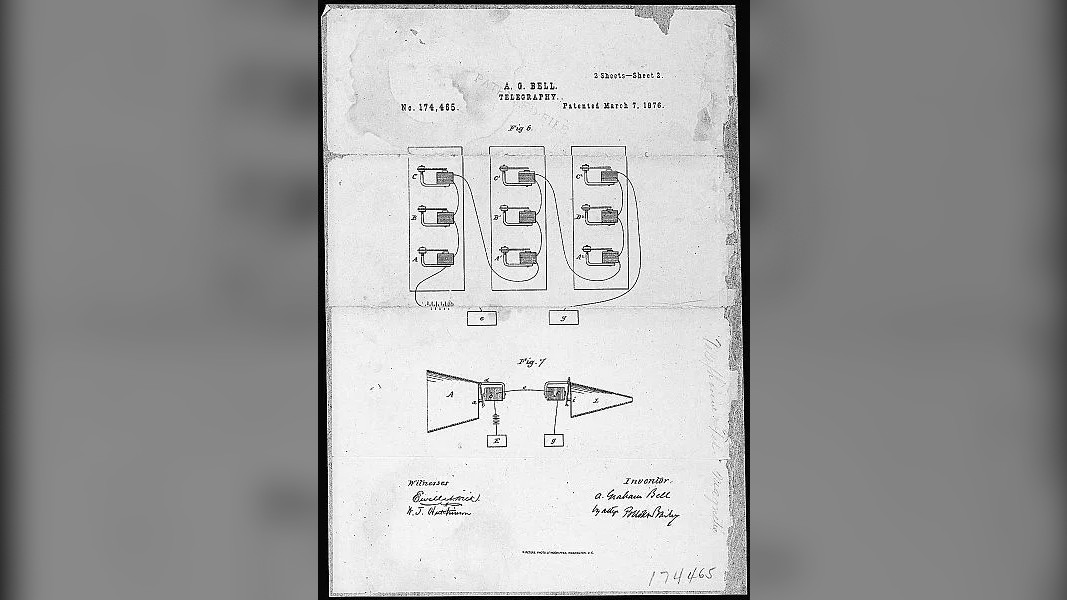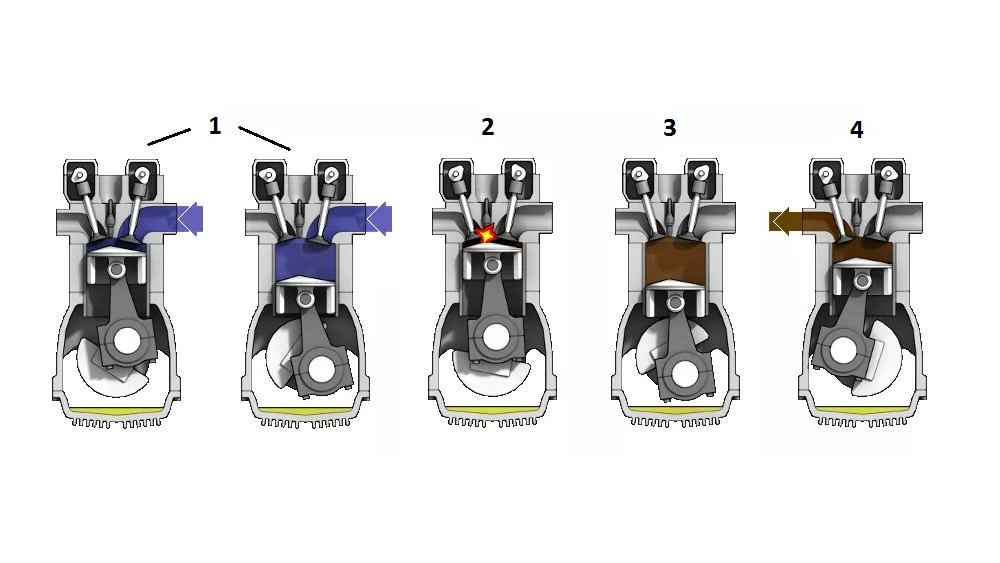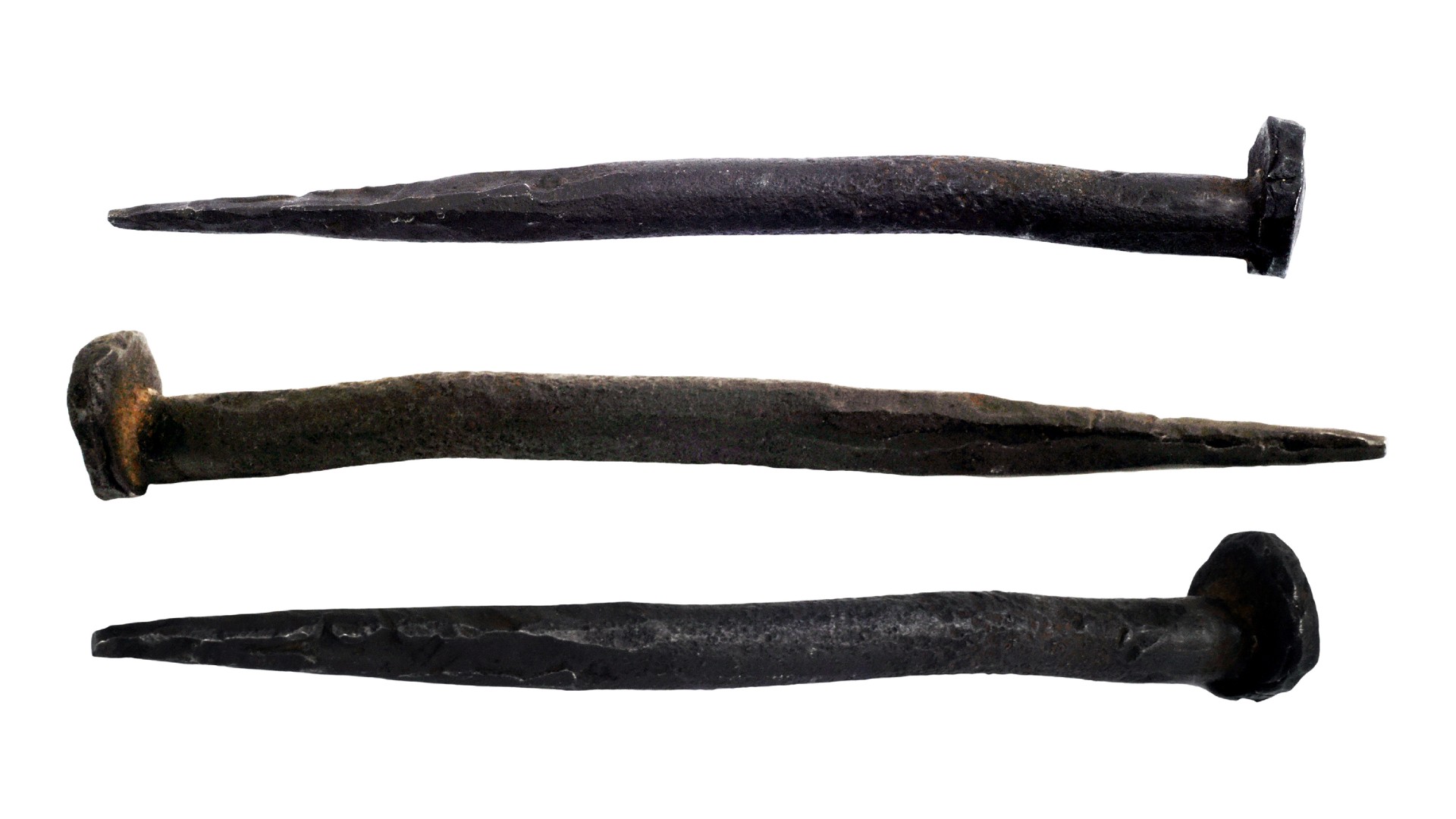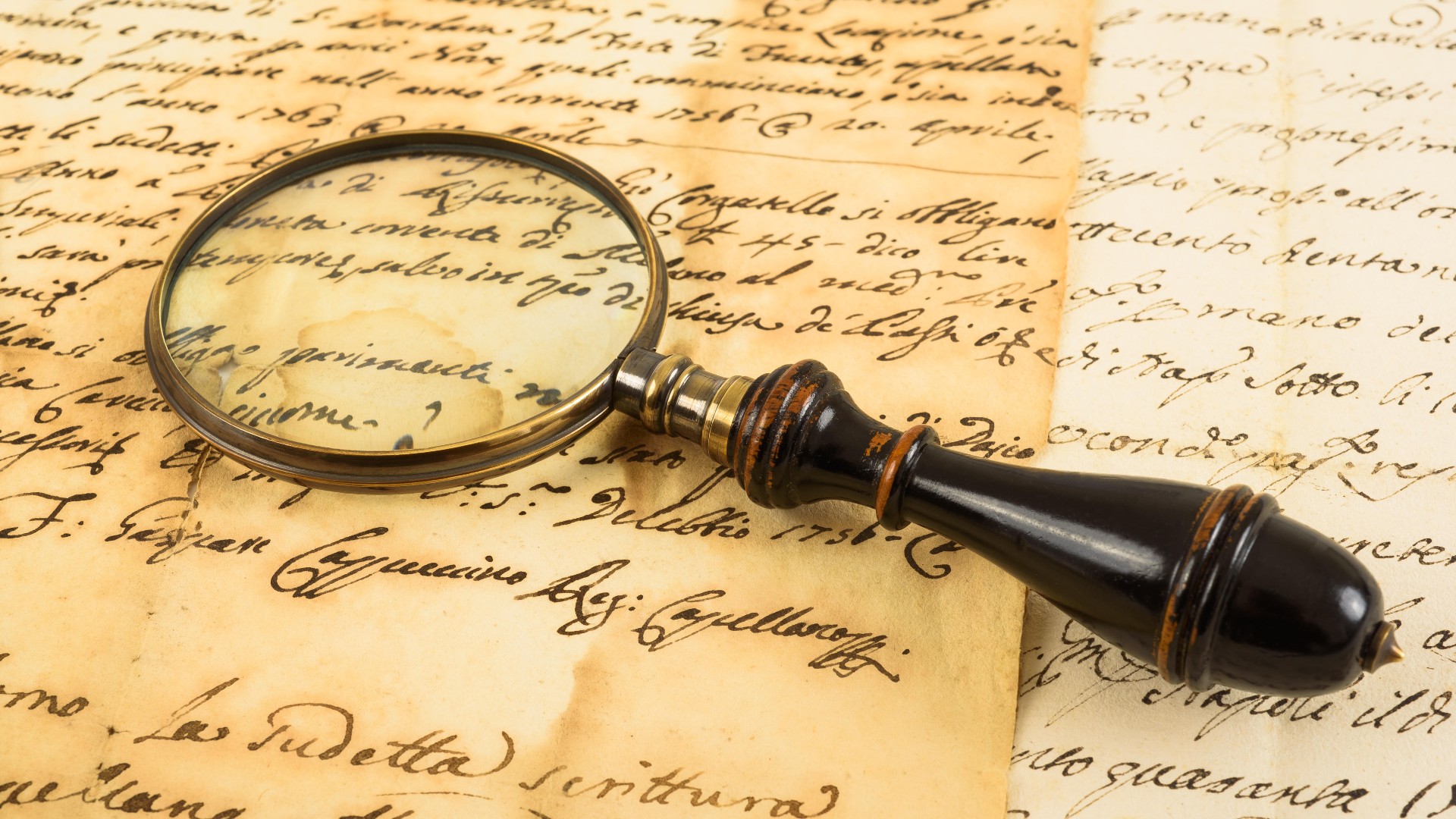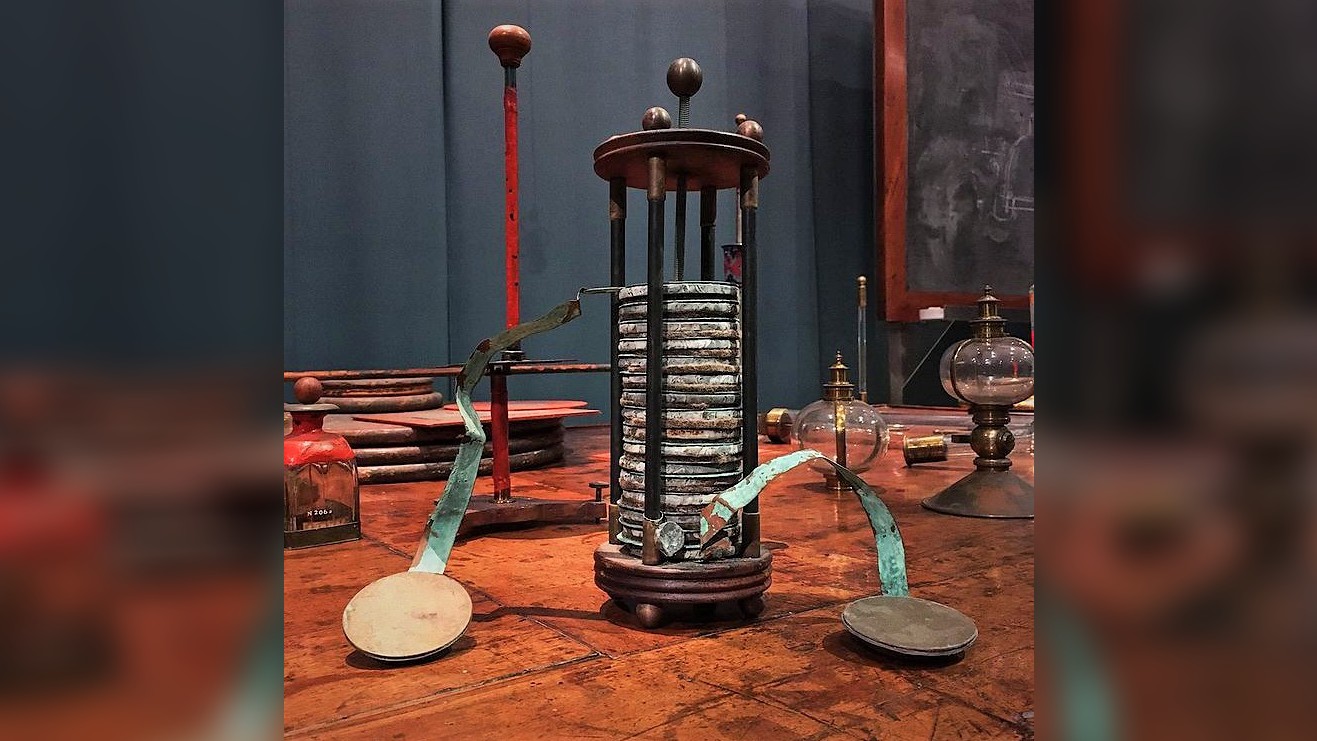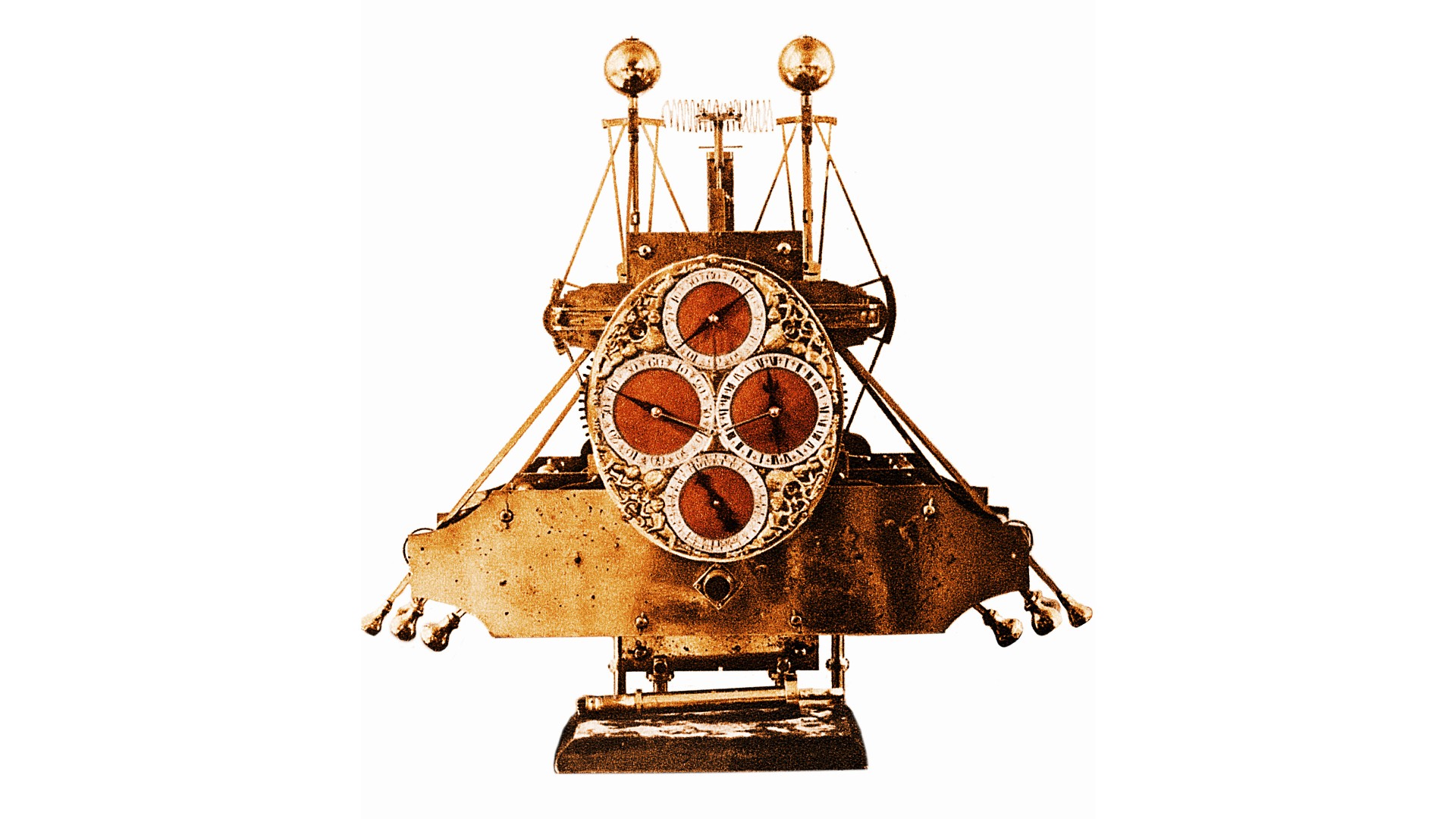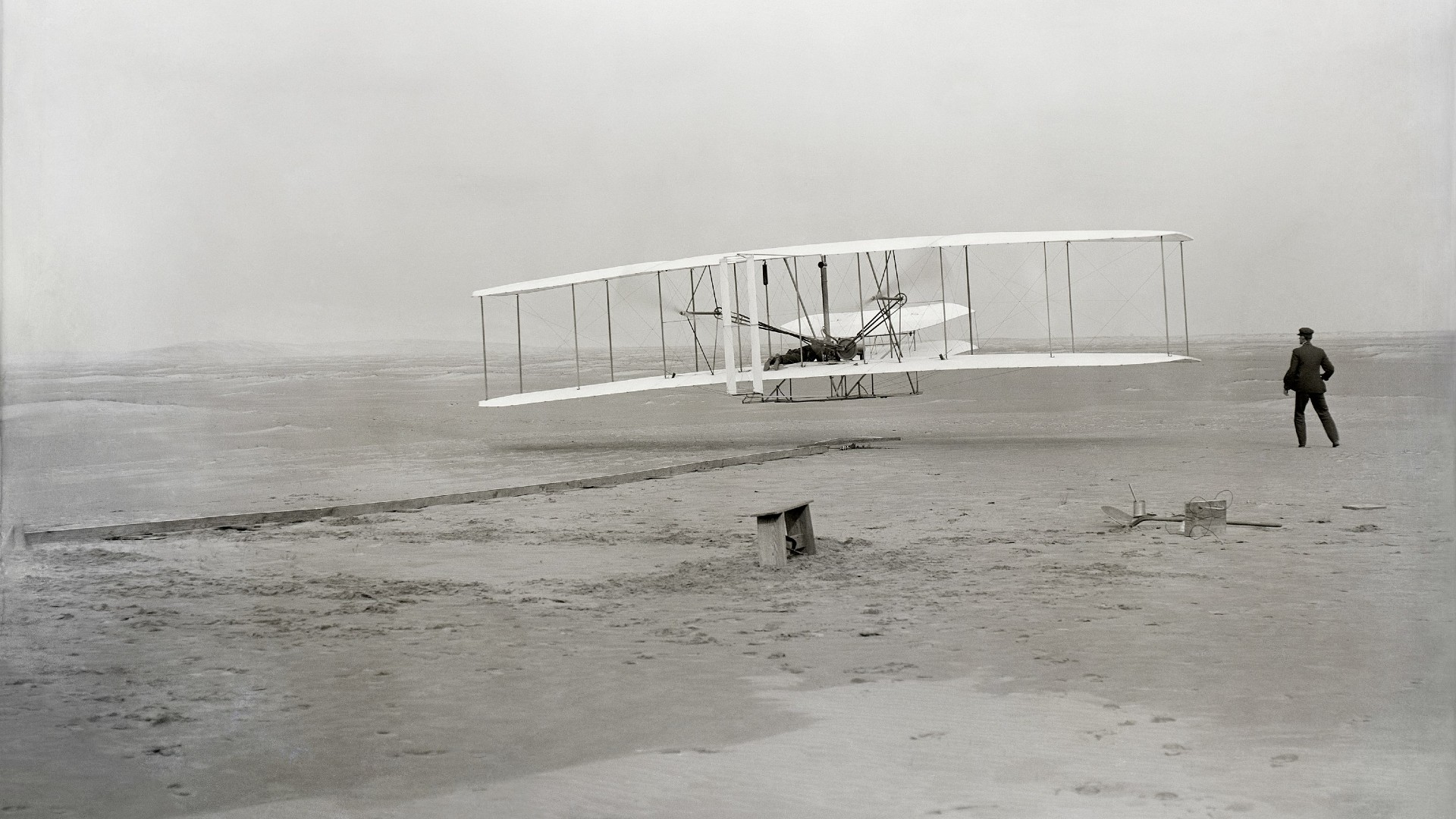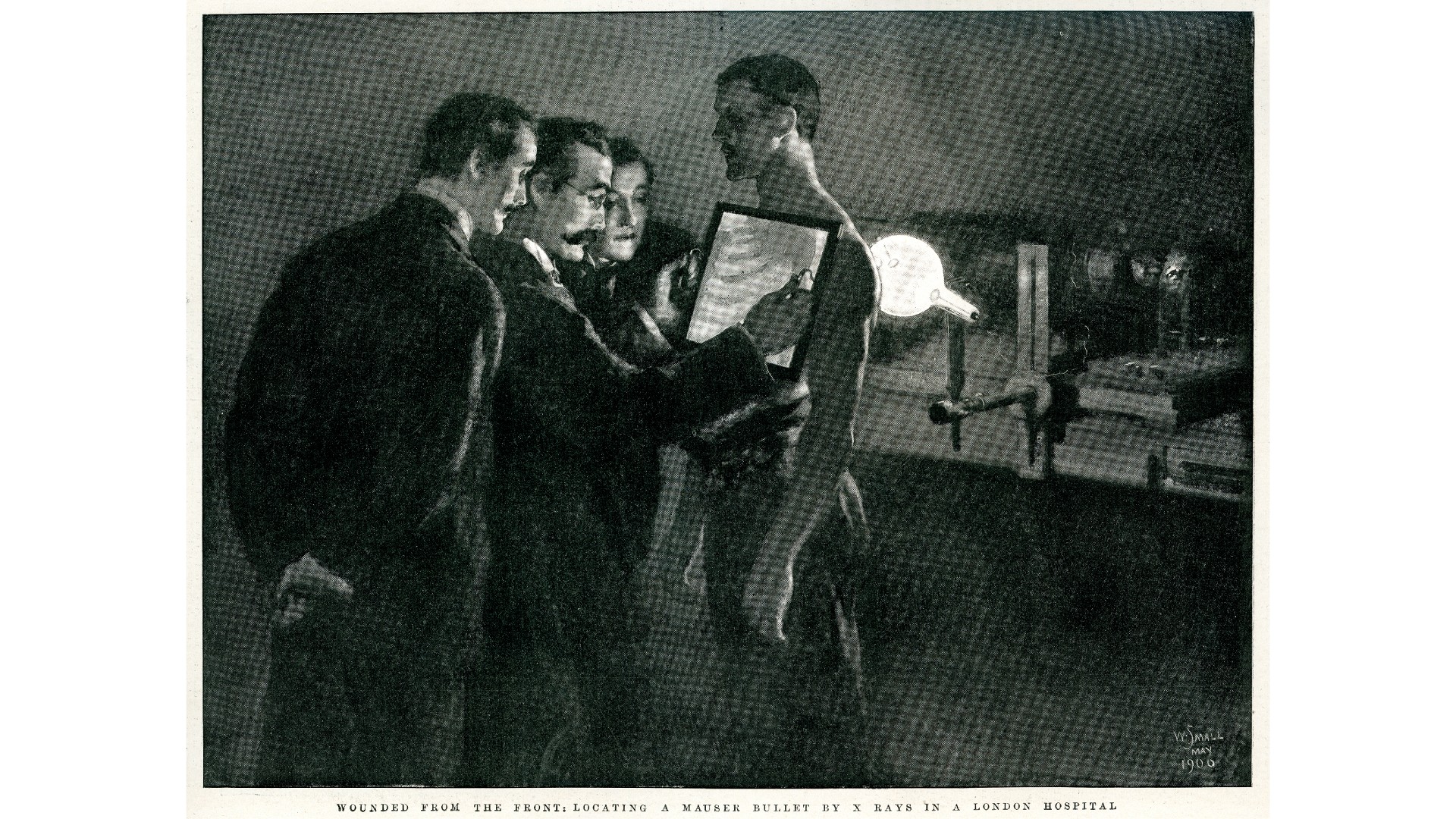22 inventions that changed the world
From the wheel 5,500 years ago to the birth control pill, these 20 inventions had huge ramifications and have helped humans shape the world around us.

- 1. GPS
- 2. Smartphones
- 3. Wheel
- 4. Printing press
- 5. Penicillin
- 6. Compass
- 7. Light bulb
- 8. Telephone
- 9. Internal combustion engine
- 10. Contraceptives
- 11. Internet
- 12. Nails
- 13. Use of fire
- 14. Concrete
- 15. Magnifying glass
- 16. Batteries
- 17. Marine chronometer
- 18. Airplane
- 19. Refrigerator
- 20. Nuclear energy
- 21. Vaccines
- 22. X-rays
Humans are naturally curious and creative, two traits that have led our species to many scientific and technological breakthroughs. Since our earliest ancestors bashed a rock on the ground to make the first sharp-edged tool, humans have continued to innovate. From the debut of the wheel to the launch of Mars rovers, several of these key advancements stand out as especially revolutionary. Some inventions are thanks to one eureka moment, but most of our most pioneering inventions were the work of several innovative thinkers who made incremental improvements over many years. Here, we explore 22 of the most important inventions of all time, along with the science behind the inventions and how they came about.
1. GPS
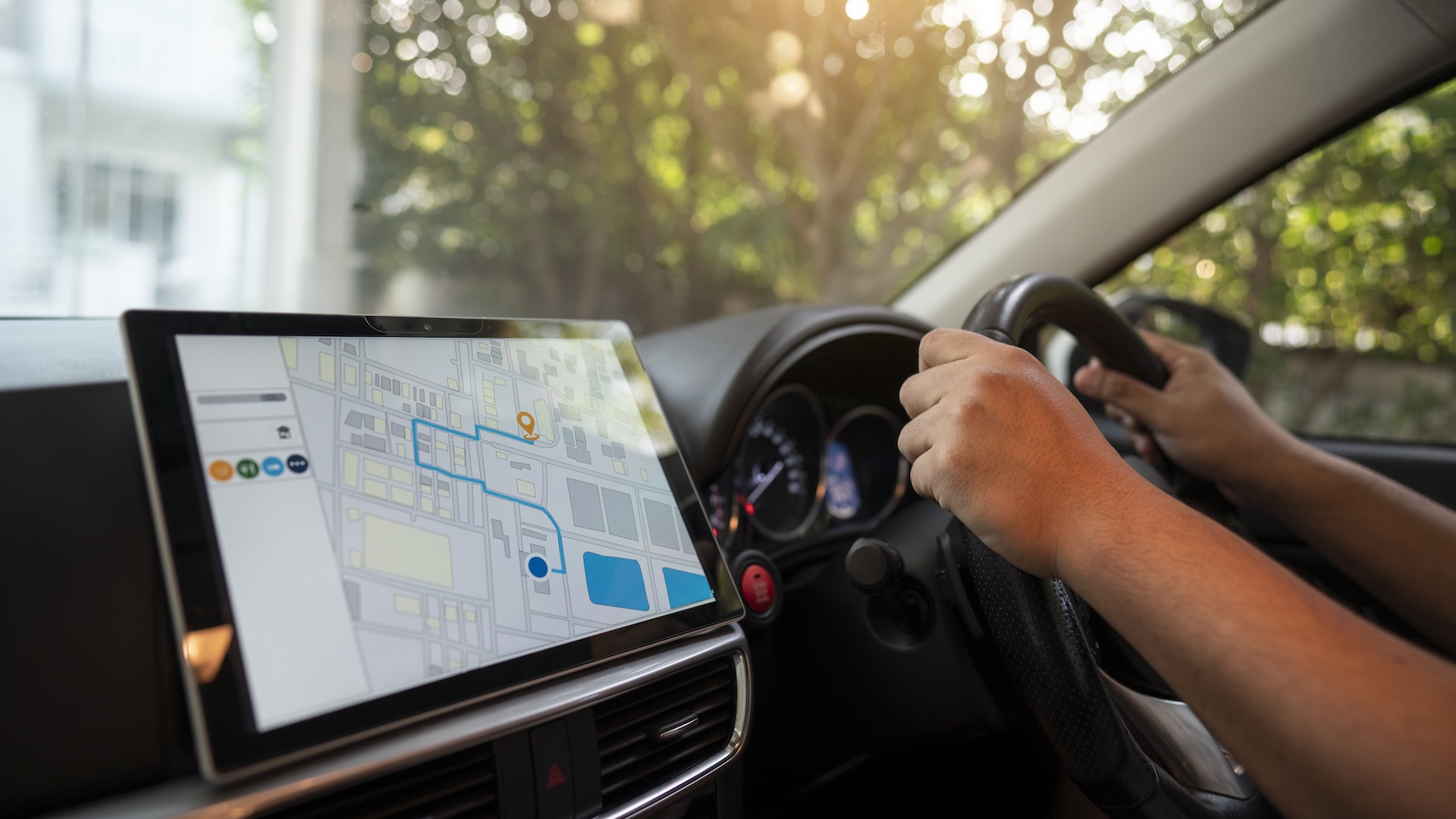
Global navigation used to be a difficult endeavor. Compasses, maps, marine chronometers and the stars helped humans populate almost every corner of Earth, but those methods are far less useful for precisely navigating an aircraft or unknown landscape on foot.
Enter the Global Positioning System (GPS), a network of satellites that constantly transmit signals that anyone on Earth can use to determine their precise position — provided they possess a simple GPS receiver. It has revolutionized transportation and allowed for navigation apps like Google Maps and Waze.
Today, there are 31 operational GPS satellites in Earth orbit, up from an initial 24 launched by the U.S. Department of Defense (DOD) between 1978 and 1993 and not including the 42 decommissioned satellites still in orbit. These are operated alongside the three other satellite navigation constellations: Russia’s GLONASS, China’s BeiDou, and the European Union’s Galileo.
GPS saves lives every day: Emergency workers use it in wilderness rescues, police use it to track suspects, and those traveling off the beaten path use it to return to civilization.
An unusual aspect of GPS that contributed to its rapid adoption by is that it is operated for free by the U.S. government. That rollout happened in the wake of a tragic incident in 1983, in which a South Korean passenger aircraft was shot down after mistakenly entering Soviet airspace. In response, then-President Ronald Reagan decided the system should be open to the public to prevent similar events from happening.
2. Smartphones

Although the telephone is already on this list, the smartphone has driven a revolution in personal, portable computing since its invention in the past few decades.
Get the world’s most fascinating discoveries delivered straight to your inbox.
The exact moment when cellphones crossed the barrier to smartphones is hard to define. An early device worthy of the title is 1994's IBM Simon, a multi-functional phone that could also send emails and contained a personal organizer. However, almost nobody used it. Other noteworthy entries include the Blackberry, which was unveiled in 2000 and revolutionized mobile web browsing, and, of course, the first iPhone, which, in 2007 introduced the touch-screen design that's ubiquitous today.
Smartphones have been a launchpad for social media and instant messaging apps and have combined multiple forms of technology into one small device. Most people use their smartphones as a combination of cellphone, computer, camera and organizer, but these mobile devices can also act as smart sensors, navigational devices, microphones, wallets and more.
3. Wheel
Before the invention of the wheel in 3500 B.C., humans were severely limited in how much stuff we could transport over land, and how far. The wheel itself wasn't the most difficult part of "inventing the wheel." When it came time to connect a non-moving platform to that rolling cylinder, things got tricky, according to David Anthony, an emeritus professor of anthropology at Hartwick College.
"The stroke of brilliance was the wheel-and-axle concept," Anthony previously told Live Science. "But then making it was also difficult." For instance, the holes at the center of the wheels and the ends of the fixed axles had to be nearly perfectly round and smooth, he said. The size of the axle was also a critical factor, as was its snugness inside the hole (not too tight, but not too loose, either).
The hard work paid off, big time. Wheeled carts facilitated agriculture and commerce by enabling the transportation of goods to and from markets, as well as easing the burdens of people travelling great distances. Now, wheels are vital to our way of life, found in everything from clocks to vehicles to turbines.
David Anthony is professor emeritus and curator emeritus of anthropology at Hartwick College in Oneonta, New York. He has done extensive archaeological fieldwork in Ukraine, Russia and Kazakhstan. Anthony is the author of "The Horse, the Wheel, and Language" (Princeton, 2007) and has co-authored studies including the finding that humans first rode horses 5,000 years ago.
4. Printing press
German inventor Johannes Gutenberg invented the printing press sometime between 1440 and 1450. Key to its development was the hand mold, a new molding technique that enabled the rapid creation of large quantities of metal movable type. Though others before him — including inventors in China and Korea — had developed movable type made from metal, Gutenberg was the first to create a mechanized process that transferred the ink (which he made from linseed oil and soot) from the movable type to paper.
With this movable type process, printing presses exponentially increased the speed with which book copies could be made, and thus they led to the rapid and widespread dissemination of knowledge for the first time in history. In her book “The Printing Revolution in Early Modern Europe” (Cambridge University Press, 2012), late historian Elizabeth L. Eisenstein wrote, “printers’ workshops would be found in every important municipal center by 1500.” It has been estimated that up to twenty million volumes had been printed in Western Europe by 1500, although Eisenstein estimates that it was around eight million.
Among other things, the printing press permitted wider access to the Bible, which in turn led to alternative interpretations, including that of Martin Luther, whose "95 Theses" a document printed by the hundred-thousand sparked the Protestant Reformation.
5. Penicillin
It's one of the most famous discovery stories in history. In 1928, the Scottish scientist Alexander Fleming noticed a bacteria-filled Petri dish in his laboratory with its lid accidentally ajar. The sample had become contaminated with a mold, and everywhere the mold was, the bacteria was dead. That antibiotic mold turned out to be the fungus Penicillium, and over the next two decades, chemists purified it and developed the drug penicillin, which fights a huge number of bacterial infections in humans without harming the humans themselves.
Penicillin was being mass-produced and advertised by 1944. This poster attached to a curbside mailbox advised World War II servicemen to take the drug to rid themselves of venereal disease.
About 1 in 10 people have an allergic reaction to the antibiotic, according to a study published in 2003 in the journal Clinical Reviews in Allergy and Immunology. Even so, most of those people go on to be able to tolerate the drug, researchers said.
Related: What causes allergies?
6. Compass
Ancient mariners used the stars for navigation, but this method didn’t work during the day or on cloudy nights, making it dangerous to travel far from land.
The first compass was invented in China during the Han dynasty between the 2nd Century B.C. and 1st Century A.D.; it was made of lodestone, a naturally-magnetized iron ore, the attractive properties of which they had been studying for centuries. However, it was used for navigation for the first time during the Song Dynasty, between the 11th and 12th centuries,
Soon after, the technology to the West through nautical contact. The compass enabled mariners to navigate safely far from land, opening up the world for exploration and the subsequent development of global trade. An instrument still widely used today, the compass has transformed our knowledge and understanding of the Earth forever.
7. Light bulb
The invention of the light bulb transformed our world by removing our dependence on natural light, allowing us to be productive at any time, day or night. Several inventors were instrumental in developing this revolutionary technology throughout the 1800s; Thomas Edison is credited as the primary inventor because he created a completely functional lighting system, including a generator and wiring as well as a carbon-filament bulb like the one above, in 1879.
As well as initiating the introduction of electricity in homes throughout the Western world, this invention also had a rather unexpected consequence of changing people's sleep patterns. Instead of going to bed at nightfall (having nothing else to do) and sleeping in segments throughout the night separated by periods of wakefulness, we now stay up except for the 7 to 8 hours allotted for sleep, and, ideally, we sleep all in one go.
8. Telephone
Several inventors did pioneering work on electronic voice transmission — many of whom later filed intellectual property lawsuits when telephone use exploded — but it was Scottish inventor Alexander Graham Bell who was the first to be awarded a patent for the electric telephone on March 7, 1876 (his patent drawing is pictured above). Three days later, Bell made the first telephone call to his assistant, Thomas Watson, saying "Mr Watson, come here — I want to see you," according to author A. Edward Evenson in his book, “The Telephone Patent Conspiracy of 1876: The Elisha Gray-Alexander Bell Controversy and Its Many Players” (McFarland, 2015).
Bell’s inspiration for the telephone was influenced by his family. His father taught speech elocution and specialized in teaching the deaf speak, his mother, an accomplished musician, lost her hearing in later life and his wife Mabel, who he married in 1877, had been deaf since the age of five, according to Evenson. The invention quickly took off and revolutionized global business and communication. When Bell died on Aug. 2, 1922, all telephone service in the United States and Canada was stopped for one minute to honor him.
9. Internal combustion engine
In these engines, the combustion of fuel releases a high-temperature gas, which, as it expands, applies a force to a piston, moving it. Thus, combustion engines convert chemical energy into mechanical work. Decades of engineering by many scientists went into designing the internal combustion engine, which took its (essentially) modern form in the latter half of the 19th century. The engine ushered in the Industrial Age, as well as enabling the invention of a huge variety of machines, including modern cars and aircraft.
Pictured are the operating steps of a four-stroke internal combustion engine. The strokes are as follows: 1) Intake stroke — air and vaporised fuel are drawn in. 2) Compression stroke - fuel vapor and air are compressed and ignited. 3) Power stroke — fuel combusts and the piston is pushed downwards, powering the machine. 4) Exhaust stroke — exhaust is driven out.
10. Contraceptives
Not only have birth control pills, condoms and other forms of contraception sparked a sexual revolution in the developed world by allowing men and women to have sex for leisure rather than procreation, they have also drastically reduced the average number of offspring per woman in countries where they are used. With fewer mouths to feed, modern families have achieved higher standards of living and can provide better for each child. Meanwhile, on the global scale, contraceptives are helping the human population gradually level off; our number will probably stabilize by the end of the century. Certain contraceptives, such as condoms, also curb the spread of sexually transmitted diseases.
Natural and herbal contraception has been used for millennia. Condoms or ‘sheaths’ have existed in one form or another since ancient times, according to scholar Jessica Borge in her book “Protective Practices: A History of the London Rubber Company and the Condom Business” (McGill-Queen’s University Press, 2020), with the rubber condom developed in the 19th century. Meanwhile, the FDA approved the first oral contraceptive pill in the United States in 1960 and by 1965, more than 6.5 million American women were on the pill, according to author Jonathan Eig in his book, “The Birth of the Pill: How Four Pioneers Reinvented Sex and Launched a Revolution” (W. W. Norton & Company, 2015).
Scientists are continuing to make advancements in birth control, with some labs even pursuing a male form of "the pill." A permanent birth-control implant called Essure was approved by the Food and Drug Administration in 2002, though in 2016, the FDA warned the implant would need stronger warnings to tell users about serious risks of using Essure.
Related: 7 surprising facts about the pill
11. Internet
The internet is a global system of interconnected computer networks that is used by billions of people worldwide. In the 1960s, a team of computer scientists working for the U.S. Defense Department's ARPA (Advanced Research Projects Agency) built a communications network to connect the computers in the agency, called ARPANET, the predecessor of the internet. It used a method of data transmission called "packet switching", developed by computer scientist and team member Lawrence Roberts, based on prior work of other computer scientists.
This technology was progressed in the 1970s by scientists Robert Kahn and Vinton Cerf, who developed the crucial communication protocols for the internet, the Transmission Control Protocol (TCP) and the Internet Protocol (IP), according to computer scientist Harry R. Lewis in his book “Ideas That Created the Future: Classic Papers of Computer Science” (MIT Press, 2021). For this, Kahn and Cerf are often credited as inventors of the internet”.
In 1989, the internet evolved further thanks to the invention of the World Wide Web by computer scientist Tim Berners-Lee while working at CERN (The European Organization for Nuclear Research). According to CERN, "the basic idea of the WWW was to merge the evolving technologies of computers, data networks and hypertext into a powerful and easy to use global information system." The development of the WWW opened up the world of the internet to everybody and connected the world in a way that it had never been before.
Related: Inventor of World Wide Web snags computer science's top prize
12. Nails
This key invention dates back more than 2,000 years to the Ancient Roman period and became possible only after humans developed the ability to cast and shape metal. Previously, wood structures had to be built by interlocking adjacent boards geometrically a much more arduous construction process.
Until the 1790s and early 1800s, hand-wrought nails were the norm, with a blacksmith heating a square iron rod and then hammering it on four sides to create a point, according to the University of Vermont. Nail-making machines came online between the 1790s and the early 1800s. Technology for crafting nails continued to advance; After Henry Bessemer developed a process to mass-produce steel from iron, the iron nails of yesteryear slowly waned and by 1886, 10 percent of U.S. nails were created from soft steel wire, according to the University of Vermont. By 1913, 90 percent of nails produced in the U.S. were steel wire.
Meanwhile, the invention of the screw - a stronger but harder-to-insert fastener - is usually ascribed to the Greek scholar Archimedes in the third century B.C., but was probably invented by the Pythagorean philosopher Archytas of Tarentum, according to David Blockley in his book “Engineering: A Very Short Introduction” (Oxford University Press, 2012).
13. Use of fire
The use of fire is one of humankind's most powerful early inventions and radically changed the way our ancient ancestors lived. Offering warmth and the ability to cook foods such as meat, the campfire was also a social gathering place. Fire also provided some protection against predators.
The exact date fire was discovered has long remained a mystery, with some studies suggesting it was first used by hominins in Kenya 1 million years ago to cook meat. Other evidence suggests that Neanderthals in Europe and Asia harnessed fire, while Homo sapiens evolving in Africa mastered the skill of creating fire. More recently, archaeologists in Israel found evidence of hominin fire use dating to 1.5 million to 2 million years ago.
14. Concrete
Ancient Romans are credited as one of the first societies to use concrete in architecture, with Roman bathhouses and iconic sites such as the Colosseumand Pantheon dome constructed using concrete mixed with volcanic ash, lime, and seawater. Incredibly, many of these ancient buildings are not only standing, but remain in good condition some 2,000 years later — a testament to the longevity of Roman concrete. However, the ancient Egyptians used a crude form of concrete in their buildings much earlier in 3000 B.C., employing forms of concrete mixed with ash and salt water to create mortar. One study concluded that parts of the Great Pyramids of Giza might have been built using concrete. Concrete is strong in compression but breaks easily in tension, so the invention of reinforced steel-concrete toward the end of the 19th century in France, which lends concrete some of steel's tensile strength, enabled concrete to be used more widely in construction.
15. Magnifying glass
Franciscan friar and Oxford University scholar Roger Bacon first developed the magnifying glass in 1268. Sometimes dubbed "Britain's first scientist,"' Bacon's magnifying glass built on research by Muslim scholars.
However, the use of optical tools dates back much further. Evidence suggests that as early as 700 B.C., people in ancient Egypt noticed that they could look through crystals to improve vision.
16. Batteries
The first battery dates back to 1800, when Italian physicist Alessandro Volta wrapped stacked discs of copper and zinc in a cloth, submerged it in salty water and discovered that it conducted energy. In 1802, Scottish professor William Cruickshank invented a variation of Volta's design known as the trough battery, which consisted of 50 discs of copper and zinc in a wooden box filled with a salt solution to conduct energy. However, it was French physicist Gaston Planté who invented the first practically used battery, in 1859. Modern variations on Planté's rechargeable lead-acid battery are still used in cars today.
17. Marine chronometer
The 15th century marked the beginning of the great voyages of discovery by adventurers and sea merchants and the development of a global ocean trade network. Trading vessels carried highly prized silk, spices, salt, wine and tea across often-treacherous seas for months on end. After the loss of four ships at sea in the Scilly naval disaster of 1707, seafarers realized they needed an accurate way to determine longitude when out of sight of land.
In 1714, the British parliament offered a prize of 20,000 pounds to anyone who could solve the problem. Carpenter John Harrison won the bounty in 1735 with his marine chronometer. What is perhaps even more remarkable is that Harrison was a self-taught clockmaker. His ingenious timekeeping device was powered by the rocking motion of the ship rather than by gravity and could be used by sailors to accurately calculate longitude at sea.
18. Airplane
The ability for humans to fly has captured the imagination of inventors for centuries, with the first human-operated flight taking place in 1783 when Joseph-Michael and Jacques-Ètienne Montgolfier took to the skies in a hot air balloon. In 1853 British engineer George Cayley designed the first glider to successfully take flight, but it wasn’t until 1903 that Orville and Wilbur Wright's plane became the first airplane to have a successful voyage. It not only took off from Kitty Hawk, North Carolina using its own power; it flew and landed without destruction, unlike many earlier aircraft inventions. The Wright brothers were inspired by watching' birds in flight. The glider took a page from birds' wings but had a 32-foot (10 meters) wingspan.
19. Refrigerator
Refrigeration in some form has been around for thousands of years. Depending on the climate, ice or cold water was used to keep food cold in ancient times. But artificial refrigeration didn't come until 1748, when the physician William Cullen first demonstrated evaporative cooling. Further breakthroughs came in 1834, when a vapor-compression system was developed by American engineer Jacob Perkins. In 1876, German engineer Carl von Linde came up with a process of liquifying the gas, ushering in the era of commercial refrigeration. In 1913, American engineer Fred Wolf invented the first domestic refrigerator, and as demand for fresh produce grew, so did the number of households with refrigerators.
20. Nuclear energy
Nuclear energy was first discovered in the 1930s by Italian physicist Enrico Fermi, who found that bombarding atoms with neutrons could split them, generating huge amounts of energy. He went on to develop the first nuclear chain reaction at the University of Chicago. This successful experiment led to the development of several nuclear plants in the 1950s, with Idaho launching the first nuclear plant in 1951 with electricity produced from atomic energy at its Experimental Breeder Reactor I site. Obninsk in the former Soviet Union became the first grid-connected nuclear power plant in the world in 1954, while Shippingport nuclear plant, Pennsylvania became the first commercial nuclear plant in 1957.
Nuclear power remains widely used around the world today, generating approximately 10% of global energy.
One problem is that existing nuclear power plants use fission to split atoms, and this produces radioactive substances that take ages to decay. And the risks of nuclear disasters, such as those at Chernobyl and the Fukushima-Daiichi nuclear power plant, highlight the challenges of fission-based nuclear power.
So scientists are working to create usable nuclear fusion reactors, which could theoretically generate clean, limitless energy. In 2022, scientists reported a minor breakthrough: a fusion reactor that generated more energy than was put into it. However, we're still a long way from a usable fusion reactor, experts say.
21. Vaccines
The World Health Organization (WHO) estimates that approximately 2 million to 3 million lives are saved annually thanks to vaccinations against contagious diseases such as diphtheria, tetanus and measles.
The earliest rudimentary vaccination is thought to date back to the 10th century in China, when people inoculated small scratches in the skin with small doses of smallpox to provide protection against the disease. But in 1796, English physician Edward Jenner discovered that milkmaids rarely caught or died of smallpox because they were previously infected by the cowpox virus, also called Vaccinia. So he used cowpox to develop a smallpox vaccine. He inoculated an 8-year-old boy with cowpox and then with smallpox, and the boy never caught the deadly scourge. Jenner's experiment led to the creation of a smallpox vaccine and his work is regarded as the start of immunology. In 1980, smallpox was declared officially eradicated by WHO. But scientists continue to develop new life-saving vaccines — most notably, the coronavirus vaccines that played a large role in combatting the pandemic.
22. X-rays
Like many famous inventions, the X-ray was discovered by accident. In 1895, German engineer and physicist Wilhelm Conrad Röntgen was undertaking a two-month study into the potential of radiation. In an experiment testing whether cathode rays could pass through glass, he noticed that the radiation was able to pass through screens of considerable thickness, leaving a shadow of solid objects. He soon discovered that X-rays could pass through human tissues to show a clear picture of the skeleton and organs. A year later, a group of physicians took the earliest X-rays on patients. These observations led to the development of radiology as we know it today and has since helped medical professionals diagnose broken bones, tumors, organ failures and more.
Editor's Note: This story was updated to correct the location of Edison's lab. It was Menlo Park, New Jersey, not Menlo Park, California.
Natalie Wolchover was a staff writer for Live Science from 2010 to 2012 and is currently a senior physics writer and editor for Quanta Magazine. She holds a bachelor's degree in physics from Tufts University and has studied physics at the University of California, Berkeley. Along with the staff of Quanta, Wolchover won the 2022 Pulitzer Prize for explanatory writing for her work on the building of the James Webb Space Telescope. Her work has also appeared in the The Best American Science and Nature Writing and The Best Writing on Mathematics, Nature, The New Yorker and Popular Science. She was the 2016 winner of the Evert Clark/Seth Payne Award, an annual prize for young science journalists, as well as the winner of the 2017 Science Communication Award for the American Institute of Physics.
